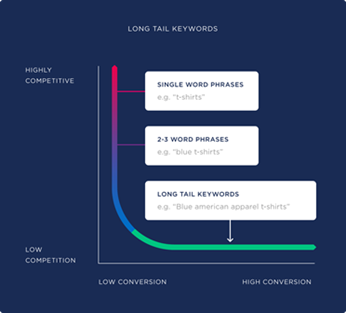Many conveyancing firms face challenges when it comes to Google marketing and with the rise in digital marketing, the power has been placed back into the hands of the small firms, giving them the same opportunities as their bigger rivals.
Google marketing may seem complex to those that aren’t familiar, but is generally a very user-friendly product.
By the end of this article you will know the difference between SEO and Paid Ads and how you can use these two strategies to boost your brand.
Google marketing: SEO
Search optimisation engine (SEO) is the practice of increasing the quantity and quality of traffic to your website through organic search engine results.
The Google algorithm considers over 200 factors when determining what websites to show for a certain search term.
Put simply, SEO is the reason your competitors appear on Google when someone searches for ‘Conveyancers near me’.
By improving your SEO, Google will rank your website as ‘more useful’ than your competitors and being to show you above them when searched.
Here are three simple steps to improve your firm’s SEO.
1. SEO Keywords
SEO keywords are certain phrases added to your website to improve search engine rankings. When you change your content to include these key phrases, your website can rank higher for those terms.
A tip to keep in mind when choosing key phrases, you will get a higher rank if you use phrases that have more than 4 words. This diagram is a good representation of how this works:

As an example, if there is a page on your website about ‘Property law’, you could use ‘Property Law in NSW’ as your keywords.
Go through your page and make sure these words are used as often as possible throughout the content – as long as your sentences still make sense!
There are online tools that can help you get this right. A good one is YOAST SEO.
This website-plugin will tell you the best places to insert keywords and how many times you should use them.
It’s page-specific so spend a bit of time coming up with your keywords for each page, then sit back and watch the traffic roll in!
2. Create a Google My Business profile
Google My Business is free tool that allows you to promote your Business Profile and business website on Google Search and Maps.
This allows you to further attract and engage clients when they search for your business on Google. In a nutshell, a Google My Business profile tells Google exactly who you are and what you do.
This saves the Google algorithm from having to find it via your website information, which they show their thanks for by ranking your website higher.
The best thing about creating a Google My Business profile is that you don’t need to be an expert to do it. You just need to know your company’s information and be able to update it when needed.
According to Google, people searching for “near me” after a phrase has increased by 500 per cent, meaning that now more then ever is important to showcase your location and service through Google marketing.
3. Posting Articles on your website
Posting content to your website is one of the easiest ways to rank your website higher on the Google search engine.
Compared to generic pages on your website, articles and blog posts are more engaging and allows more chance to include keywords. They are also a great way to build authority for your site.
The more content you have on your site, the more Google will favour you in their rankings. Especially if those blog-pages are SEO optimised with your keywords.
Paid Advertisements
For those with a bit more of a budget, you can look at Paid Advertisements through Google, which is split into Search Engine Marketing (SEM), and the Google Display Network (GDN).
1. Search Engine Marketing (SEM)
Search engine marketing is the practice of marketing a business using paid advertisements that appear on search engine results pages (or SERPs).
Through SEM, you would be paying Google to rank your website higher. This is sometimes known as Google Adwords.
Using the same example as before, rather than changing all the content on your website to read ‘Property law in NSW’, you can create an SEM Advert that places it at the top. You’ll see these commonly in google with a ‘Sponsored ad’ tag before the link, at the top of the search results.
In terms of cost, these ads operate on a pay-per-click basis. That means you’re only paying when someone clicks on your ad.
The amount you pay-per-click is based on how competitive the keywords are and how many other people are bidding on them.
Setting up SEM ads is done through the Google Ads website. Simply follow the prompts and enter in information as needed.
2. Google Display Network (GDN)
While Adwords appear in a Google Search, the Google Display Network lets you reach thousands of websites that allow advertising on their sites. It’s a network of over 2 million websites, videos and apps that your ads can appear.
One of the major differences of the GDN is that these ads are visual. They incorporate imagery and can be displayed in a range of different sizes and formats.
When setting up these ads, you will be prompted with an ‘audience’ selection. This allows you to customise who your ads are shown to, based on the data Google marketing has.
Carrying on our example, if you wanted to target parents in NSW that are looking to buy a house, you could select these options when setting up the ads.
Google will identify when someone from NSW is looking to buy a house, based on their previous search history, and will serve them up your ad.
Again, the GDN uses the pay-per-click model meaning that you only pay when someone clicks on your ad.
As a conveyancing firm, you want to take advantage of anything that can make you more visible online. Google Marketing offers many services for your business owners to leverage, so why not use it?
For more tips on marketing, property-market updates, CPD opportunities and more, subscribe free today to The Conveyancing Digest monthly Newsletter.






